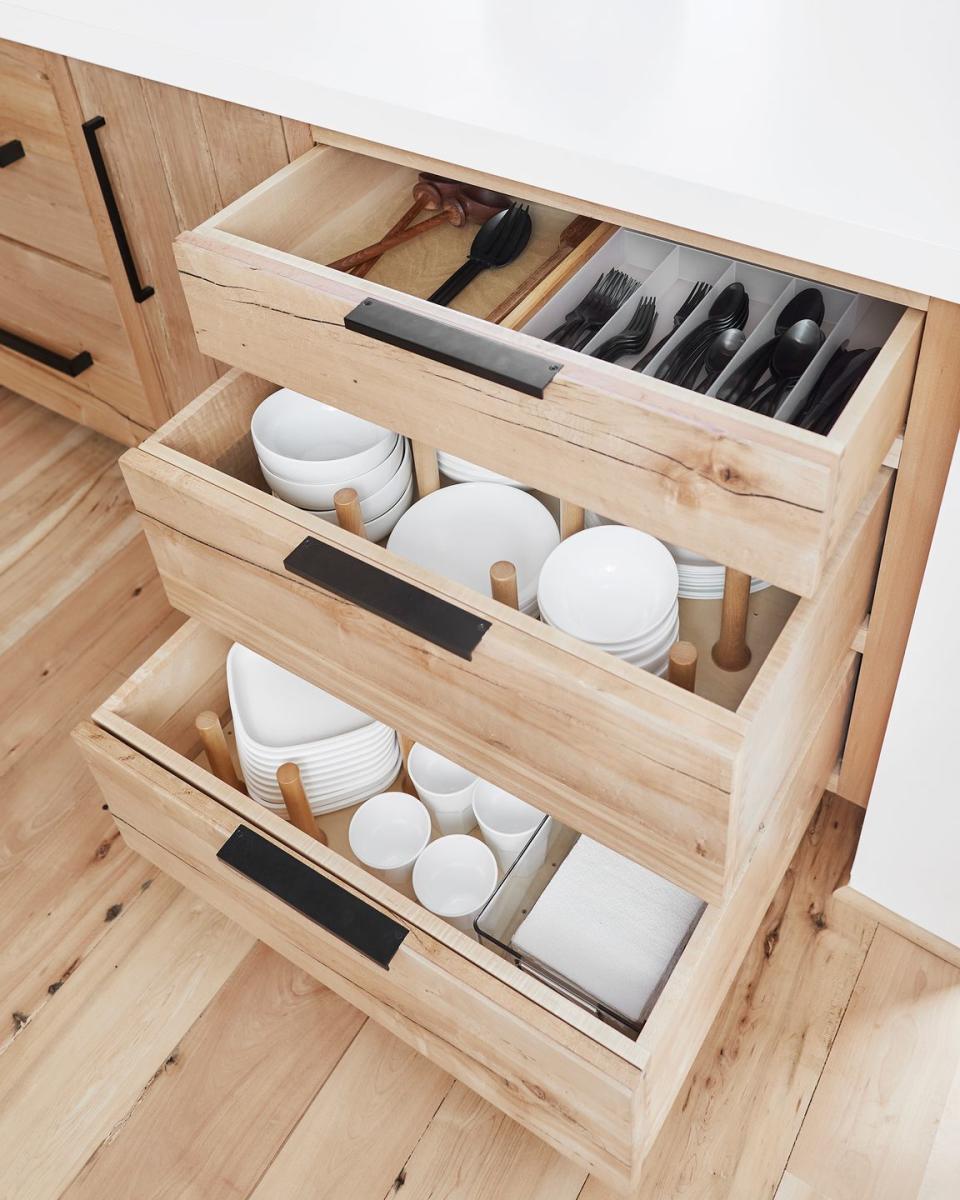A Definitive Guide to Loading Your Dishwasher the Right Way

It's probably fair to say that about half of family feuds are linked to chores. And of that half, most are likely arguments over how to load the dishwasher. For something that's supposed to make life simpler, it's the source of a lot of drama and controversy. Do knife tips go up or down? Are plastic containers a no-go or is it fine to put them in the dishwasher?
To get a basic breakdown of the best way to load a dishwasher once and for all, we asked a GE representative to lend their expertise. Of course, the correct way to load a dishwasher will vary from appliance to appliance, but we consolidated the important general rules of thumb to keep in mind for optimal hygiene and maintenance. Read through them below (and maybe stick them up on the fridge for easy access for the rest of the household).
How to Load Forks and Spoons:
If you have baskets instead of a slim top rack to lay them flatly, space out your forks and knives evenly with the handle side down. Don't overcrowd them, otherwise they will probably not be as thoroughly cleaned.

How to Load Knives:
For safety reasons, it's important to leave the the blade side pointing down on most knives so you don't cut yourself when unloading. Butter and duller knives, though, can be loaded handle side down. For super-sharp knives and cooking knives, most chefs agree hand-washing is best (dishwasher detergents are quite abrasive).
How to Load Glasses:
Load your glasses onto the top rack, not the bottom. If your dishwasher has goblet or stem clips, make sure to use those for more fragile pieces, like wine glasses. These will hold them steady and maintain even spacing.
How to Load Plates:
Line the plates apart evenly on the bottom rack and space them apart. Cramming two into one slot is a bad idea, as fragile items could break and they won't get as clean.
How to Load Bowls:
Load the bowls onto the top rack down the center. Laying them flat is best if they can fit that way (most dishwashers allow you to adjust the clips to fold them down) but it's also okay to have them slightly tilted. As long as you don't bunch them up way too closely or load them onto the bottom rack, you're golden.

How to Load Plastic Containers:
Don't load any plastic containers on the bottom rack. It's too hot for them, and they will likely melt. But before you start scrubbing them down with your hands, don't worry: You can still load them onto the top rack in the same manner you load bowls because it's not as hot up there.
How to Load Bigger Dishes:
First of all, make sure there's enough room for them to be loaded without laying on top of any other dishes. If there is, it'll likely be on the bottom section. Laying them flat or on the side is fine. Stainless steel pots and pans are also dishwasher-safe, but make sure to dump any excess foot before loading them.
General Dishwasher Rules:
And on that note... One of the most controversial dishwasher dilemmas: To pre-rinse or not to pre-rinse? While it's definitely good to scrape off huge chunks of leftover food, do not rinse traces and remnants off food before putting dishes in the washer. It seems gross and counter intuitive, but as the Wall Street Journal explains, "enzymes in Cascade detergent are designed to attach themselves to food particles. Without food, the enzymes have nothing to latch on to. So, basically, detergents won't know they need to clean if there isn't enough grime to tell them.
All this being said, you should definitely consult your specific dishwasher's manual for specific details and dos and don'ts, as they can vary from machine to machine.
Follow House Beautiful on Instagram.
You Might Also Like

